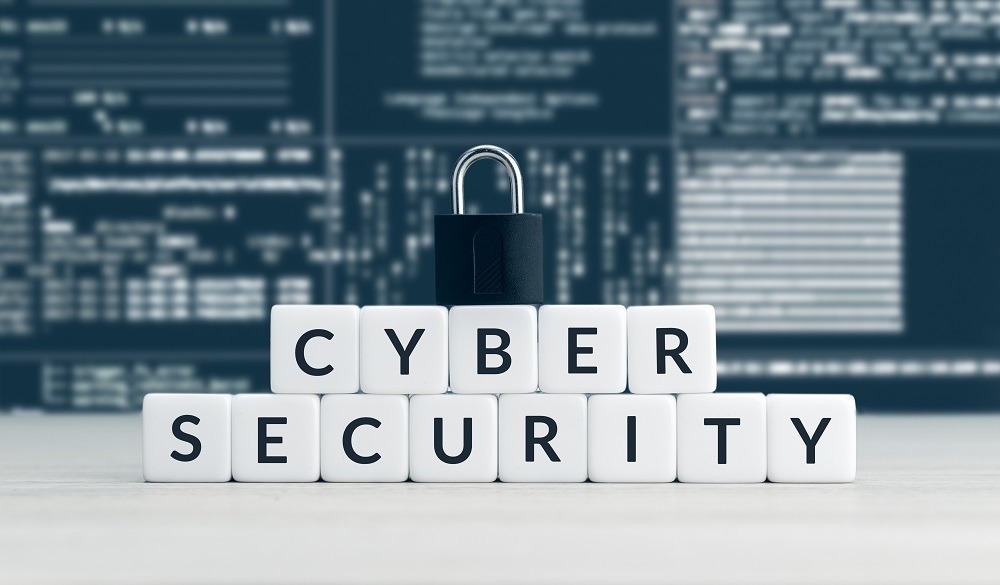In today’s digital world, cybersecurity is key for businesses everywhere. It affects governments, healthcare, finance, and big tech like Microsoft and IBM. The 2021 Colonial Pipeline ransomware attack shows how important it is.

The market size hit over $175 billion in 2023. This growth comes from new threats and rules. Companies from the NSA to Fortune 500 are spending on security. They’re changing how they handle risks.
Key Takeaways
- Cybersecurity growth now impacts all industries due to rising digital transformation.
- Regulations like GDPR and CCPA drive mandatory compliance spending.
- Cloud adoption and remote work have expanded attack surfaces, boosting industry demand.
- Startups and legacy vendors alike are innovating with AI-driven threat detection tools.
- Workforce shortages highlight critical opportunities in training and recruitment.
The Current Landscape of Cyber Security Growth
The cybersecurity market is changing fast. In 2023, global spending on cyber security hit $188 billion. Experts predict it will grow at 9.7% each year until 2030. This growth is due to more threats and new ways to fight them. Emerging threats such as AI-generated phishing attacks and deepfake scams are becoming increasingly prevalent, exploiting advanced technologies to deceive individuals and organizations.
Global Market Size and Valuation
Market values are on the rise. Grand View Research says the cyber security market could hit over $500 billion by 2030. Companies like Palo Alto Networks and CrowdStrike are seeing huge revenue jumps. This is thanks to businesses wanting better tools to find and stop threats.
Regional Growth Disparities
How fast different areas grow varies a lot:
| Region | Annual Growth Rate | Key Drivers |
| North America | 8.2% | Regulatory compliance (GDPR/CCPA) |
| Asia-Pacific | 11.3% | Rapid digital transformation in India/China |
| Europe | 9.5% | Cyber defense initiatives |
| Latin America | 10.1% | Government infrastructure upgrades |
Key Industry Drivers
- Digital transformation in manufacturing and healthcare
- Cloud security adoption (AWS, Azure, and Google Cloud platforms)
- Remote work policies expanding attack surfaces
- Rise in ransomware targeting critical infrastructure
These factors create a cycle where threats lead to new solutions. Gartner analysts believe 75% of companies will spend more on security by 2025. This is to tackle the growing threats.
Understanding the Factors Accelerating the Cyber Security Industry’s Growth
Global cyber attacks jumped 63% in 2023. But the response is more than just reacting. The growth in cyber security comes from big changes in how companies protect data. New technologies and market shifts are pushing the industry to grow beyond just fighting threats.
|
Factor |
Impact on Industry |
| Cloud Migration | 85% of enterprises adopt hybrid clouds, requiring specialized protection for distributed systems |
| Subscription Services | Managed detection and response (MDR) services now account for 40% of vendor revenue streams |
| Risk Mitigation Mandates | Insurance premiums drop 20% for companies with ISO 27001 certifications |
| Investor Activity | 2023 venture rounds reached $12.4B, with 60% targeting AI/ML solutions |
| Regulatory Pressures | Organizations failing audits face average fines of $1.2M in GDPR noncompliance cases |
Automated security tools are filling gaps left by a shortage of 3 million professionals. Since 2020, U.S. federal cybersecurity budgets have doubled due to geopolitical conflicts. These trends create a cycle where growing information security becomes essential, not just an extra cost.
Evolving Threat Landscape: Catalyst for Security Expansion
Rising cyber threats are changing cyber security trends, making industries use better defenses. Ransomware attacks cost businesses billions each year, with ransom demands over $100,000. The rise of ransomware-as-a-service (RaaS) makes these attacks easier for less-skilled attackers, increasing the need for incident response tools and encryption.
According to recent reports, ransomware attacks have surged, with businesses facing increased financial and reputational risks.
Nation-state hacking campaigns, like the 2020 SolarWinds breach, show the need for strong federal compliance tools. Critical infrastructure sectors focus on zero-trust frameworks to fight state-sponsored intrusions. Also, supply chain attacks like the Log4j vulnerability have led to the need for continuous vendor risk assessments, creating new markets for third-party audit platforms.
| Threat Type | Key Example | Security Response |
| Ransomware | Conti Group | Endpoint detection & response (EDR) tools |
| Nation-State | SolarWinds | Zero-trust architecture |
| Supply Chain | Log4j | Vendor risk management platforms |
| IoT | 2023 Ormandy ransomware | Device hardening solutions |
IoT devices, set to reach 29 billion by 2030, bring new risks to smart cities and healthcare. Manufacturers are now adding security-by-design practices to tackle these issues. These growing challenges drive innovation in detection tools, compliance software, and device-level protections. This shows that as threats evolve, so does the market in cyber security trends.
Regulatory Influences on Information Security Growth
Regulations around the world are key in shaping information security growth. They drive the need for better tools and services as companies follow the law. These laws not only set standards but also open up new opportunities for security vendors and providers.
“Regulations are the new engine of innovation in cybersecurity,” said a 2023 Gartner report, emphasizing how legal frameworks drive technology adoption.
Global Privacy Laws: GDPR & CCPA
GDPR and CCPA have grown the privacy tech sector. Companies spend on tools to avoid fines. For example, GDPR’s fines can be up to 4% of a company’s revenue, leading to more spending on data solutions.
Federal Compliance Drivers
-
- Cybersecurity Maturity Model Certification (CMMC) mandates for defense contractors
- FedRAMP requirements for federal cloud providers
- SEC’s cybersecurity disclosure mandates for public companies
These rules push sectors to use zero-trust and encryption. This growth helps the market expand.
Industry-Specific Rules
Healthcare must follow HIPAA, leading to more EHR security and breach detection. Banks face PCI DSS, driving payment security innovation. Energy firms under NERC CIP fund grid protection solutions. Each sector’s rules create its own market within the broader information security growth.

Key Technologies Driving Cyber Security Growth
New cyber security technologies are changing how companies protect themselves. These innovations help fix weaknesses and create new business opportunities. They include automated threat detection and quantum-resistant encryption, leading to market growth.
AI and Machine Learning Applications
AI tools like Darktrace and CrowdStrike’s Falcon find threats automatically. Machine learning spots patterns to predict attacks. Spending on AI security is expected to hit $45 billion by 2025.
These tools help companies respond faster. They also help with the lack of skilled security experts.
Zero Trust Architecture
Zero Trust models from Okta and Microsoft Azure control access tightly. They assume breaches will happen, so every request is checked. Tools like Cisco Stealthwatch and Duo Security are key.
Companies using Zero Trust see a 30% drop in data breaches.
Cloud Security Solutions
Cloud environments need special security. AWS GuardDuty and Palo Alto’s Prisma Cloud keep data safe. Cloud security tools find misconfigurations and control data flow.
This area is expected to grow 17% by 2030.
Quantum-Safe Cryptography
NIST is working on new cryptography for quantum computers. Companies like ISARA Corp. are making algorithms safe from quantum attacks. Google and IBM are testing new encryption methods.
Early users in finance and defense are focusing on this tech. They want to protect their data from becoming obsolete.
Cyber Security Investment Opportunities in Emerging Sectors
Emerging sectors are opening up new cyber security investment opportunities as digital changes speed up. Healthcare, industrial infrastructure, and autonomous systems face growing threats. This creates a need for specialized solutions. Investors can focus on areas where cyber threats meet fast innovation.
- Healthcare Security: Protecting electronic health records and IoT medical devices. Market size projected to reach $20B by 2028.
- Industrial Cybersecurity: Securing factories and critical infrastructure against OT/IT breaches. Expected to grow at 12% CAGR to 2030.
- Autonomous Vehicles: Safeguarding connected car networks and LiDAR systems. Sector valued at $1.5B by 2030.
- Fintech Solutions: Defending digital payments and blockchain platforms. Market size to hit $35B by 2027.
| Sector | Market Size (2023) | 2030 Projection |
| Healthcare | $12B | $20B |
| Industrial | $10B | $25B |
| Autonomous Vehicles | $500M | $1.5B |
| Fintech | $20B | $35B |
“Emerging sectors will account for 40% of total cybersecurity spending by 2025,” stated a 2023 report by Frost & Sullivan.
Strategic cyber security investment opportunities are found in 5G networks ($8B by 2025) and smart city systems ($10B by 2028). Startups like Cynerio (healthcare) and Dragos (industrial) are making waves. Investors should look at sectors with strict regulations and clear returns. Companies need to match their solutions with changing standards like ISO/SAE 21434 for cars or NIST for smart cities.
Workforce Development: The Human Element of Cybersecurity Expansion
The cyber security industry growth is speeding up, and people are its most important asset. We need to fill the skills gap to meet the demand. By 2025, there will be 3.5 million jobs in cybersecurity that are not filled, says (ISC)².
Jobs like ethical hackers and threat analysts are in short supply. This shortage slows down how fast companies can respond and innovate.
Skills Gap Analysis
There’s a big need for people skilled in cloud security and AI. A 2023 survey by Cybersecurity Ventures found 62% of companies are slower because they don’t have enough staff. This gap is creating chances for automation but also risks without human check.
Education and Training Initiatives
Programs like IBM’s Security Academy and SANS Institute offer special certifications. Companies and universities are teaming up, offering apprenticeships. For example, Palo Alto Networks has internship programs.
Microlearning platforms like Cybr have seen a 40% increase in students in 2023.
Regular employee training programs are essential to recognize and respond to sophisticated scams, reducing the risk of successful cyber attacks.
Diversity in Cybersecurity
Women make up only 24% of cybersecurity jobs, according to ISACA 2023. More diversity means better problem-solving, with 22% more success in red team exercises. Here’s a look at the current numbers:
| Category | Current Representation |
| Female Professionals | 24% |
| Minority Representation | 18% |
| Neurodiverse Workforce | 9% |
“Diverse teams identify 30% more attack vectors through varied cognitive approaches.” – NIST 2024 Workforce Report
To grow the cyber security industry growth to $407B by 2030, we need to hire more inclusively and offer ongoing learning. Investing in talent is now key to keeping up with technology and security needs.
Cybersecurity Market Growth Projections: 2023-2030
The next decade will see big changes in the cybersecurity market. Experts say it will be worth over $500 billion by 2030. This growth is due to more cyber threats and new tech.
Short-term Forecast (2023-2025)
For the next few years, we’ll see fast growth in cybersecurity. This is because of new threats and rules. Here are some key trends:
- Every year, the market will grow by 10-12% until 2025. This is thanks to better defenses against ransomware and AI tools.
- Cloud security and protecting endpoints will get the most money. Healthcare and finance will lead in spending.
- In the EU, companies are working hard to follow GDPR rules. In the U.S., zero-trust models are becoming more popular.
Long-term Outlook (2025-2030)
By 2030, the market could grow by 12-15% every year. There will be big changes:
- Quantum computing threats will lead to new encryption and security rules.
- AI will become common in finding threats, making responses faster.
- Spending on IoT and IIoT security will triple by 2030.
Sector-Specific Growth Predictions
Different industries and areas will have their own growth paths:
- Technology Sectors: Cloud security will grow by 14% every year. AI tools for cybersecurity will reach $90 billion by 2030.
- Industries: Healthcare will spend a lot because of data breaches. Manufacturing will grow IoT security by 18% each year.
- Regions: Asia-Pacific will grow by 12% yearly because of digital changes. North America will focus on quantum-safe solutions.
Challenges Threatening Sustainable Growth in Cybersecurity
Cyber security growth is facing big challenges. The market is getting crowded, leading to price wars. This makes it hard for companies to make a profit.
Companies are dealing with too many systems, making it expensive to integrate them. Economic troubles make firms cut back on security spending. They focus only on the most necessary measures.
Trust in vendors is still shaky after big breaches like SolarWinds. Even with more money being spent, the cost of breaches keeps going up. This raises questions about how well money is being spent.
- Market saturation in mature markets drives price wars, squeezing margins.
- Fragmented tools create integration challenges, raising operational costs.
- Economic downturns shift focus to essential spending, sidelining innovation.
- Vendor trust issues linger after incidents like SolarWinds.
- Increased spending hasn’t reduced breach costs, highlighting effectiveness gaps.
To tackle these issues, the industry needs to standardize and use AI. It also needs to work together across different sectors. Aligning strategies with real-world risks is crucial for sustainable growth.
Improving interoperability and focusing on measurable results will help overcome these hurdles.
The Future of Cyber Security: Emerging Paradigms
Cyber threats are changing fast, and so is the future of cyber security. New technologies like decentralized systems, biometrics, and automation are changing how we protect data and buildings. These changes will shape how companies keep their information safe.
Decentralized security uses blockchain to spread trust. Platforms like Civic and uPort help create self-sovereign identities. This means less dependence on big databases and fewer chances of big hacks.
Biometric security is getting smarter. It’s moving beyond just fingerprints. Now, it looks at how you type or sound, thanks to companies like BehavioSec. New methods like vein recognition and ear shape analysis are also coming up, but there are privacy concerns.
Automation is making security faster with AI. Tools from Palo Alto Networks and IBM can find and fix threats on their own. This means fixing problems up to 40% faster in some cases.
“The future of cybersecurity demands systems that learn, adapt, and act faster than adversaries,” says Gartner’s 2024 Cybersecurity Hype Cycle report.
Implementing a zero-trust architecture, which requires strict verification for every access request, can significantly enhance security. Additionally, adopting multi-factor authentication and utilizing password managers can further protect sensitive information.
These changes require new skills, like AI ethics and blockchain knowledge. Companies must be flexible and keep user privacy in mind as they adopt these new ways of protecting data.
Conclusion: Capitalizing on the Cyber Security Growth Trajectory
Cyber security growth needs proactive strategies that keep up with new trends and challenges. As the field grows, everyone must focus on innovation that tackles real risks. This approach should avoid using fear to drive decisions.
Vendors should aim for areas like cloud security and quantum-safe cryptography. This helps them stand out in a competitive market.
Investors should look at areas with clear benefits, like AI for threat detection or compliance solutions. This ensures their money goes towards lasting cyber security trends. Companies need to spend on scalable solutions like zero trust frameworks.
They also need to train their teams to meet the demand for skilled workers. Working together across sectors will help reduce vulnerabilities and boost global security.
For cyber security growth to last, we must balance tech advancements with the skills of people. Focusing on results over quick fixes helps the industry support digital growth without losing trust. By using new tech and training talent, we can keep our connected world safe and stable.
FAQ
Q1: What is driving the explosive growth of the cybersecurity industry?
The cyber security industry is growing fast for many reasons. More cyber threats are happening, and companies are moving online more. They also need to follow new rules and use cloud computing. This means they need better security to protect their digital tools.
Q2: What are the key trends in cyber security?
Important trends in cybersecurity include using AI and machine learning to find threats. There’s also a focus on zero-trust architecture and cloud security. Plus, new ways to keep data safe from quantum computers are being developed.
Q3: How do regional differences affect cyber security growth?
Cyber security growth varies by region. North America and Europe are more advanced and have more investment. However, Asia-Pacific and Africa are catching up. Different rules, threats, and how fast companies go digital affect growth rates.
Q4: What are the main investment opportunities in the cyber security sector?
Big investment areas in cybersecurity include healthcare security, industrial cybersecurity, and fintech security. These areas are growing fast because of new technologies. Investors are looking at sectors that deal with complex tech challenges.
Q5: How do regulatory changes impact information security growth?
New rules like GDPR and CCPA create big markets for security solutions. Companies must spend more on protecting data and following rules. This leads to steady growth as businesses adjust to new standards.
Q6: How is the skills gap affecting the cybersecurity workforce?
The skills gap is a big problem for the cyber security field. It creates shortages and limits how well companies can fight threats. This gap is pushing for better education and training and highlights the need for more diverse teams.
Q7: What are some emerging paradigms in the future of cyber security?
New ideas in cybersecurity include using blockchain for security, biometrics, and AI for quick threat response. These changes will change how we approach security and create new opportunities.
What economic factors could influence cybersecurity growth projections from 2023 to 2030?
Economic factors like how fast tech is adopted, when new rules come in, and the overall economy will shape cyber security growth. The need for strong security will grow, especially in areas facing new threats and rules.















